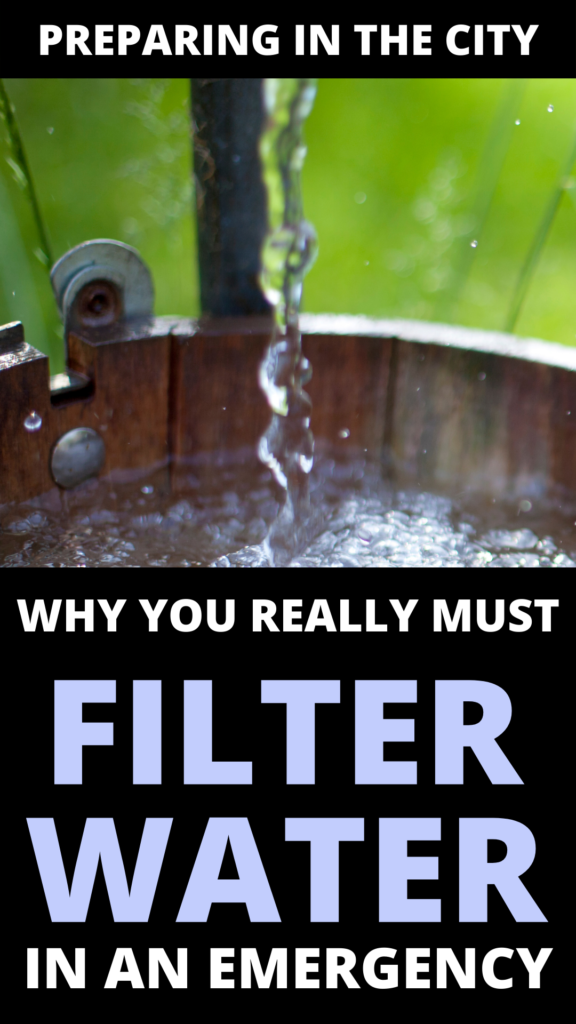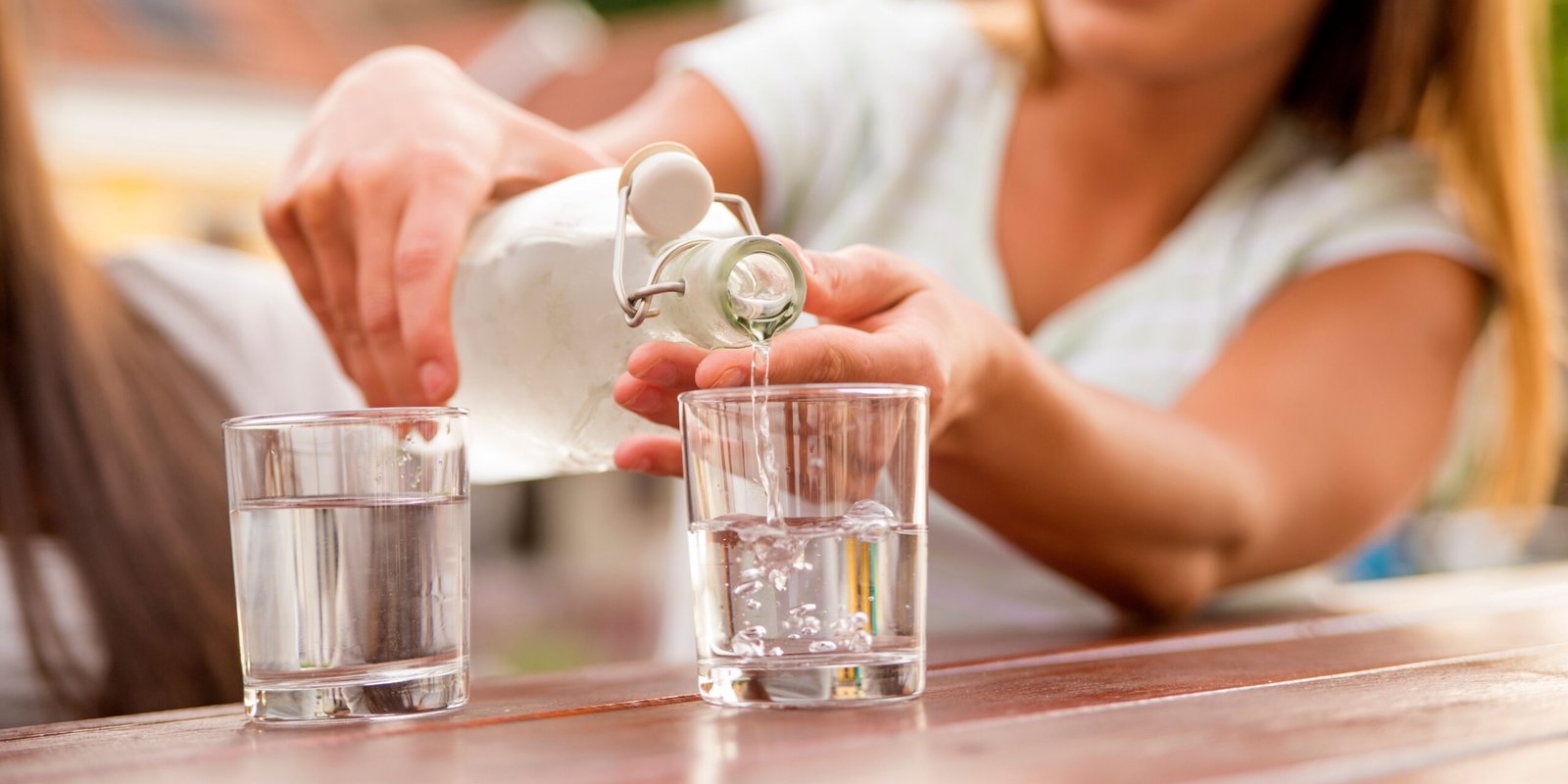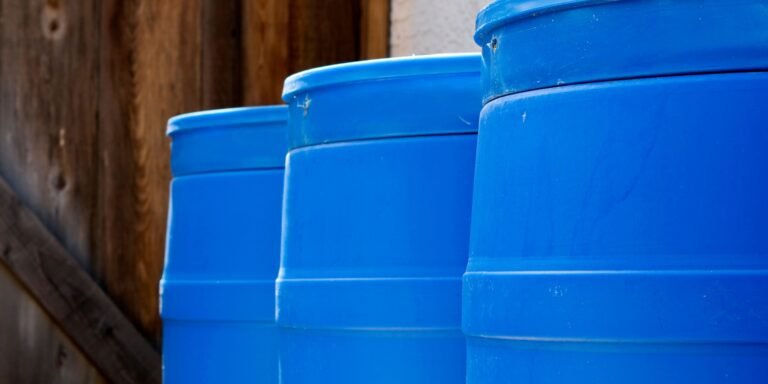Why You Need to Filter Your Water In An Emergency
This post may contain affiliate links, full disclosure here.
Dirt, minerals, chemicals, and other contaminants can contaminate water, causing it to smell and taste terrible. Some of these contaminants are harmful to your health, particularly if they contain microscopic organisms and germs that can cause serious sickness. Filtration can help cleanse water by removing contaminants and making it safe to drink, as well as improving its taste.
Filtering your water before usage is a no-brainer when there are so many aesthetic, organic, inorganic, and microbiological contaminants endangering your supply. You can’t be sure that the water you and your family drink on a daily basis is safe, clean, and life-sustaining unless you do.
Se also: Top 20 Barter Items to Stockpile
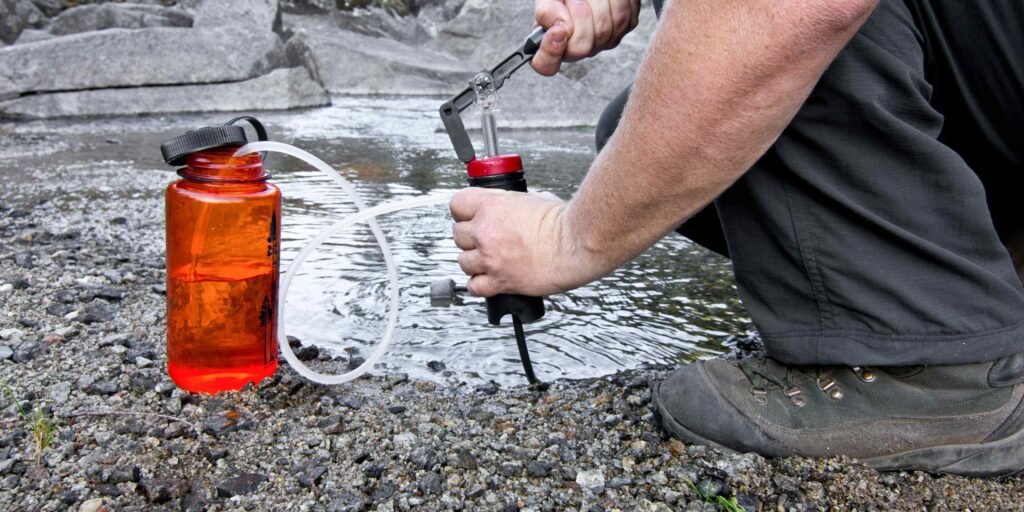
Why Is Filtering Your Water Important
Water is required for life to exist. The quality of the water, on the other hand, is just as crucial as the quantity. You can’t be sure whether the water your family drinks is safe and devoid of pollutants, whether it comes from a municipal system, a private well, or even bottled water. It’s vital to filter your drinking and cooking water to protect your family’s health.
Sediment Removal
Leaves and other debris, as well as grit, silt, and clay particles, are removed from water using mechanical filters. Metal screens, fabric, ceramic, and paper can all be used to create mechanical filters. Sediment is a type of impurity that can have an unpleasant taste but isn’t usually harmful to your health. Replaceable paper filters screen out fine debris in most home water filtering equipment.
See also: Best Ways to Purify Water From Any Source
Reducing Minerals
Leaves and other debris, as well as grit, silt, and clay particles, are removed from water using mechanical filters. Metal screens, fabric, ceramic, and paper can all be used to create mechanical filters. Sediment is a type of impurity that can have an unpleasant taste but isn’t usually harmful to your health. Replaceable paper filters screen out fine debris in most home water filtering equipment. These minerals can accumulate in water pipes, blocking them over time and lowering water pressure, perhaps creating plumbing issues.
See also: How To Make Salt and Seawater Drinkable
Pathogen Removal
To keep hazardous germs and parasites out of your drinking water, you’ll need to filter it. Giardiasis is a form of diarrheal sickness that can continue for up to six weeks. Giardia intenstinalis, a minute parasite that may persist in the environment for months, is the cause of the sickness. It can be consumed by drinking water that has been contaminated by animal or human feces. Cryptosporidium is another parasite that can cause similar symptoms. Cryptosporidium is chlorine resistant and must be removed using mechanical filters. By passing water through micro-, ultra-, and nano-filters, these microorganisms are efficiently eradicated.
Lowering Chlorine
Because chlorine is affordable, simple to apply, and very effective at killing many bacteria found in water, most municipal water utilities utilize it to treat drinking water. It can also be used to get rid of some viruses. While chlorine is an excellent disinfectant, it may also make drinking water smell and taste bad, and it can combine with certain metals to generate toxic chemicals. The chlorine odor and taste are removed from water using an activated carbon filter.
See also: Can Drinking Salt Water or Sea Water Make You Sick
Removing Dangerous Lead
When ingested, lead is dangerous, so it’s critical to keep it out of drinking water. When lead leaks into the water supply through ancient plumbing pipes or the solder used to link them together, it is regularly found in drinking water. Reverse osmosis filters, distillation, and carbon filters designed particularly to remove the metal can all be used to remove it from water. If you use well water, health officials recommend having it tested for lead and other toxins at least once a year.
See also: How To Boil Water Without Electricity
Pesticide and Chemical Removal
Most prevalent pesticides before the 1940s contained heavy metals that did not dissolve easily in water, but pesticide residue in drinking water may be on the rise nowadays as contemporary organic pesticides dissolve in water and can easily enter the water system. Pesticides and volatile organic chemicals can be removed from drinking water using activated carbon filters.
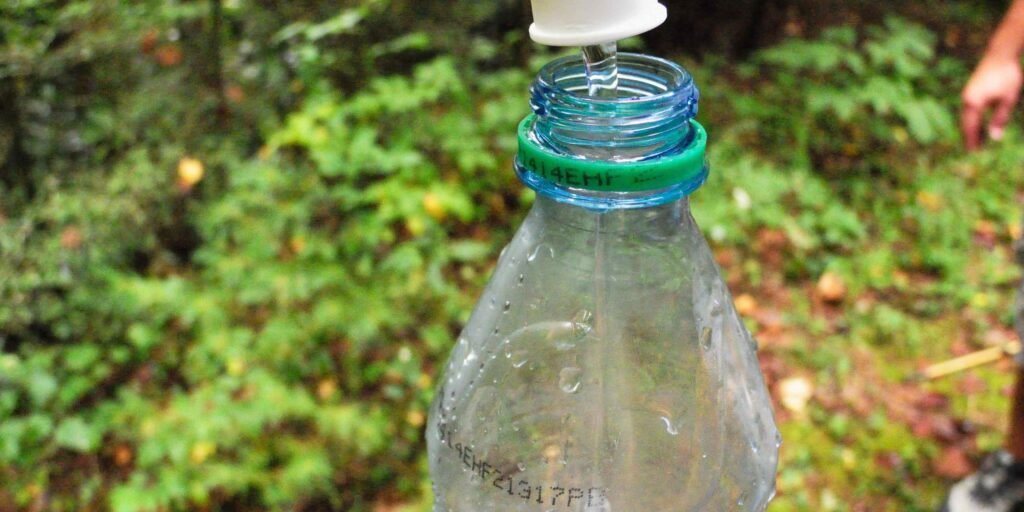
How To Make Your Water Safe In An Emergency
Boiling, adding disinfectants, or filtering tainted water can often make it safe to drink in an emergency. If feasible, utilize bottled water in an emergency; bottled water is the safest option for drinking and all other purposes. If you don’t have access to bottled water, the following ways can help you make your tap water safe to drink.
Boiling or disinfection will not make water contaminated with fuel, poisonous chemicals, or radioactive substances harmless. If you know or believe that your water is contaminated with gasoline or harmful chemicals, drink bottled water or find another source of water.
Boiling
If you don’t have access to safe bottled water, you should boil your water before drinking it. The most effective way to kill disease-causing organisms, such as viruses, bacteria, and parasites, is to boil them.
By pouring boiled water from one container to another and leaving it to sit for a few hours, or by adding a pinch of salt to each quart or liter of hot water, you can enhance the flat taste.
If the water is hazy, do the following:
- Allow it to settle or filter it through a clean cloth, paper towel, or coffee filter.
- Remove the clear water and set it aside.
- 1 minute after bringing the clean water to a rolling boil (at elevations above 6,500 feet, boil for three minutes).
- Allow the boiling water to cool.
- Boiling water should be kept in clean, sterilized containers with tight lids.
If the water is clear, do the following:
- 1 minute after bringing the clean water to a rolling boil (at elevations above 6,500 feet, boil for three minutes).
- Allow the boiling water to cool.
- Boiling water should be kept in clean, sterilised containers with tight lids.
Disinfectants
If you don’t have access to safe bottled water and boiling isn’t an option, a chemical disinfectant such as unscented home chlorine bleach can often be used to make tiny amounts of filtered and settled water safer to drink.
Disinfectants can destroy the majority of dangerous or disease-causing viruses and bacteria, but they are less efficient against highly resistant organisms like Cryptosporidium and Giardia parasites. If the manufacturer’s directions are followed correctly, chlorine dioxide pills can be effective against Cryptosporidium.
A disinfectant will not make water drinkable if it is contaminated with a chemical or radioactive element.
To use unscented household liquid chlorine bleach to disinfect water, follow these steps:
To use unscented household liquid chlorine bleach to disinfect water, follow these steps:
If the water is hazy, do the following:
- Allow it to settle or filter it through a clean cloth, paper towel, or coffee filter.
- Remove the clear water and set it aside.
- Follow the bleach label’s recommendations for cleaning drinking water.
- If the appropriate instructions are not provided, look for the sodium hypochlorite % on the label’s “Active Ingredient” section and use the information in the table below as a guide. In the United States, unscented household liquid chlorine bleach typically contains between 5 and 9 percent sodium hypochlorite, though quantities vary by country. Using a medical dropper, teaspoon, or metric measure, add the necessary amount of bleach according to the table below (milliliters).
- Stir the mixture thoroughly.
- Allow it to sit for at least 30 minutes before consuming it.
- Clean, sterilized containers with tight lids are ideal for storing disinfected water.
If the water is clear, do the following:
Follow the bleach label’s recommendations for cleaning drinking water.
- If the appropriate instructions are not provided, look for the sodium hypochlorite % on the label’s “Active Ingredient” section and use the information in the table below as a guide.
- In the United States, unscented household liquid chlorine bleach typically contains between 5 and 9 percent sodium hypochlorite, though quantities vary by country.
- Using a medical dropper, teaspoon, or metric measure, add the necessary amount of bleach according to the table below (milliliters).
Tablets are popular among campers and hikers, as well as in other nations, and can be used to disinfect water. They come in a variety of sizes and are designed to treat specified volumes of water. To use tablets to disinfect water, follow these steps:
Follow the instructions on the label or in the package provided by the manufacturer.
If the manufacturer’s directions are followed correctly, chlorine dioxide pills can be effective against Cryptosporidium.
Cryptosporidium is resistant to iodine and iodine-containing tablets (tetraglycine hydroperiodide) as well as chlorine pills.
Iodine-treated water is not suggested for pregnant women, persons with thyroid disorders, people who have a known hypersensitivity to iodine, or for use for more than a few weeks at a time.
Filters
Disease-causing parasites like Cryptosporidium and Giardia can be removed from drinking water with a variety of portable water filters.
If you’re looking for a portable water filter, consider the following:
- Choose one with a filter pore size that is small enough to eradicate parasites (such as Giardia and Cryptosporidium). Bacteria and viruses are not removed by most portable water filters.
- Read the manufacturer’s instructions for the water filter you intend to use carefully before using it.
- After filtering, add a disinfectant to the filtered water, such as iodine, chlorine, or chlorine dioxide, to destroy any lingering viruses and bacteria.
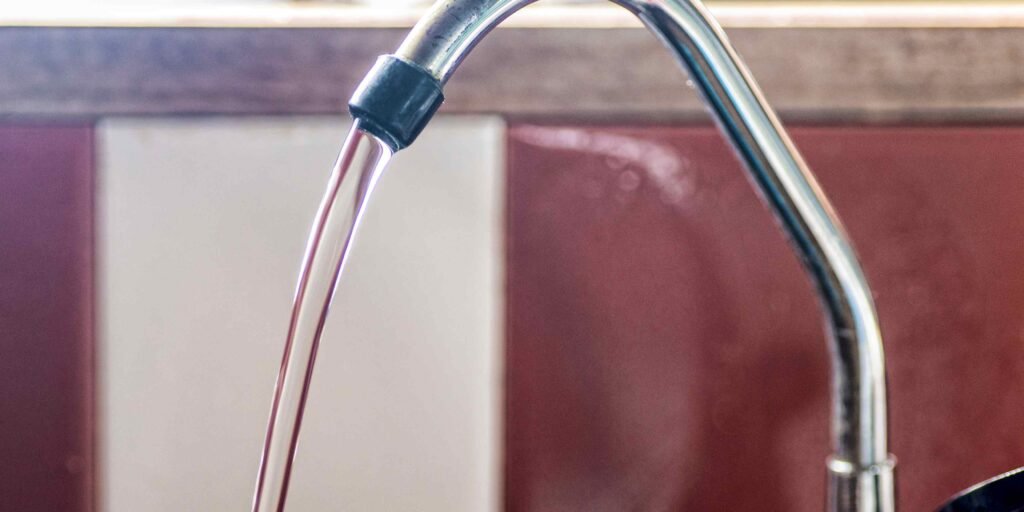
How Safe Is Your Municipal Water
If you live on a city water system, you may believe that your tap will provide all of the clean, potable water you require. The EPA has set precise safety criteria for public water providers, which limit the amount of contaminants in the water. Even if your city’s water supply complies with EPA regulations, the water is likely to contain sanitising additives like chlorine, as well as low amounts of contaminants you’re unaware of. Many of these sanitizers have a disagreeable taste and odour. The New York Times reports that “over the last five years, more than 20% of the nation’s water treatment facilities have breached fundamental provisions of the Safe Drinking Water Act.” “And the water supplied to more than 49 million people had prohibited concentrations of chemicals such as arsenic or radioactive compounds such as uranium, as well as hazardous bacteria commonly found in sewage.”
The water coming to your home can pick up impurities if the city pipes are old or in condition. Heavy metals from natural deposits underground or lead particles from old plumbing could be absorbed by your city water. Even so-called lead-free pipes can contain up to 8% lead.
Municipal water is more vulnerable to pollution during an emergency than it is at other times. The failure of normal sanitation practices increases the risk of polluted water posing a harm to your family. Filtering your water before consuming or cooking with it is the best method to safeguard your loved ones.
See also: Basics Of Storing Water For Emergency Situations
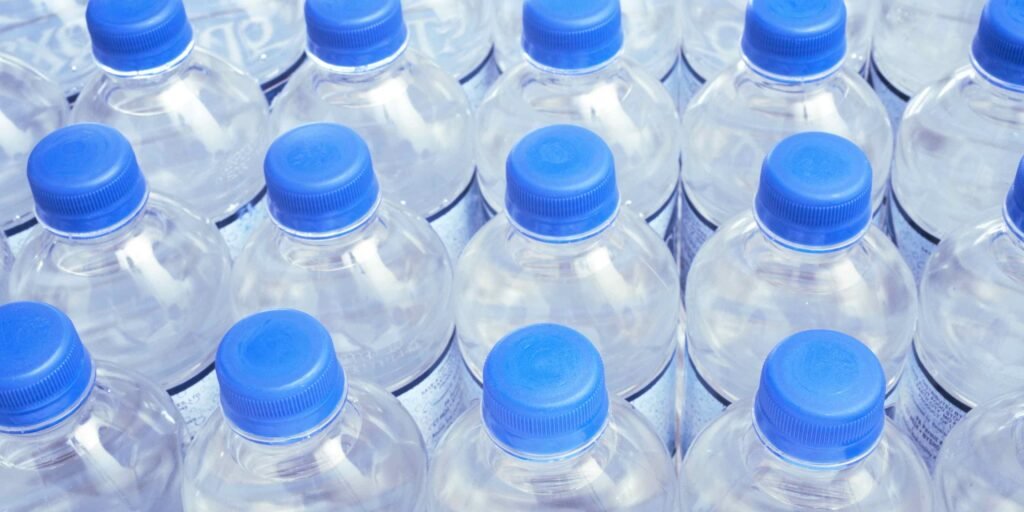
Is Bottled Water Safe?
The EPA’s Safe Drinking Water Act does not apply to bottled water. Bottled water is treated the same as any other food product by the Food and Drug Administration (FDA). It keeps an eye on handling and packaging safety while allowing only the bare minimum of chemical, microbiological, and radioactive content.
See also: Why We Need Water Purification
How to Find Out What is in Your Water
The results of the EWG survey for your city can be found here. This study is good at telling you what’s truly in your water because EWG tested for several contaminants that municipal utilities don’t test for or regulate.
You may also learn more about what’s in your tap water by looking at your water utility’s yearly water quality report. This is a valuable resource that many shoppers ignore. It’s commonly referred to as a “Consumer Confidence Report,” although it can also be referred to as a “Water Quality Report” or “Drinking Water Quality.”
By July 1 of each year, the utility is required by law to submit this report to all of its customers. You should have gotten one in the mail by now. If you misplaced it, you can request a replacement or look for a digital copy on the utility’s website.

What to Look For in a Water Filter
A tiny faucet-mounted water filter or filtration pitcher may be found in almost any big box store, but most of them are just designed to improve flavour and can only filter out sediment, chlorine, lead, and possibly a few other contaminants.
You’ll need a much better grade filter to remove arsenic, fluoride, trihalomethanes, medicines, pesticides, and other contaminants that are likely to be in your tap water. A filtration pitcher or faucet-mount filter (like as Pur or Brita) purchased from a big box retailer would not suffice.
Always examine the product specs before purchasing a filter to ensure that it can filter out the precise impurities found in your tap water, as reported by your water utility company.
You should also consider how often you should replace filter cartridges (and keep spares on hand) and any other maintenance the filter requires to perform properly. Some water filters are more difficult to maintain than others.
Remember that a good water filter will rapidly pay for itself, especially if you buy bottled water frequently, so get the best filter you can afford that will handle the pollutants in your tap water.
Under The Counter
Under-the-counter filters are convenient because they are hidden from view and provide excellent filtration. However, the initial purchase price as well as the cost per gallon can be more than the other options, and installation is required.
Countertop Filters
Countertop filters drive water through the filtering process, making water healthier and tastier and removing more toxins than ordinary pitcher systems. Countertop systems require little setup (a short hose, but no plumbing).
Water Pitcher Filters
Water pitchers are ideal for those with little space because they are portable, require no installation, fit comfortably in the fridge, and can be found on nearly every street corner. They perform a good job of filtering out some significant contaminants, but not as many as under-the-counter and countertop models. While the initial investment is low, filters must be replaced frequently, increasing the cost per gallon compared to alternative systems.

Is Your Well A Safe Water Source?
Untreated groundwater is referred to as well water. Well drillers go down to the aquifer, which is a water-filled subsurface layer of permeable rock. The water is then carried up from the ground and into your home via a pump system.
Drinkable groundwater is easy to come by. Groundwater, on the other hand, is essentially rain that has gone through the soil and into an aquifer, and it can absorb a variety of different substances along the way. There’s a lot more than H2O in your well water.
The most prevalent issues with well water are purely aesthetic, but there might be more serious issues as well. While private well groundwater is less vulnerable to contamination than surface water, it is nevertheless possible for wells to become contaminated.
Uranium, radon, and arsenic are naturally occurring pollutants that dissolve in groundwater as it flows through soil and rock. Different levels of these substances can be found in different parts of the United States. Your local water treatment specialist can assist you understand the risks that are unique to your area.
Agricultural runoff contamination is one of the most common and problematic health and safety issues. Contamination can also occur if a septic tank is too close to a private well. Nitrate contamination is one of the most serious hazards. Nitrates offer a health concern to pregnant women and young children at high levels.
How to Read a Water Quality Report
A table is often used to display the impurities and concentrations of water discovered by the water company. Here are some of the terms you’ll come across:
- The concentration of a chemical is measured in parts per billion (ppb) or parts per million (ppm).
- Maximum Contaminant Level (MCL) – This is the legal limit imposed by federal law by the Environmental Protection Agency (EPA). Pay special attention to readings that exceed the MCL (Maximum Contaminant Level). These actions are in violation of federal law and regulations.
- The Maximum Contaminant Goal Goal (MCLG) is a voluntary ideal level established by public health specialists to reduce dangers. Because regulations must take into account cost and feasibility, most of the EPA’s legal restrictions are greater than the corresponding aims.
- A water supply must do further treatment or take other actions if the concentration of a chemical reaches this number.
Examine the measurements for arsenic, lead, chromium-6, and trihalomethanes in particular. Even in “allowable” levels, they can cause major health concerns, even if they don’t exceed the regulatory cap.
Once you know what pollutants are in your water, you can figure out what type of filter you’ll need to get rid of them. A decent filter will not only pay for itself over time, but will also provide you with lots of clean water for cooking and bathing, unlike bottles of water.
Why Filter Your Water Bottom Line
Make sure your filter has been approved by a third-party certification agency. Not all filters live up to their packaging claims, so make sure the one you’re buying does. An impartial certifying agency, such as the National Sanitation Foundation International or the Water Quality Association, shall be displayed on the box.
Look for product reviews on the internet and make sure the reviewer is unbiased. Consumer Reports, for example, receive the top reviews and ratings from groups that do not sell the products. Consumer Reports is published by Consumers Union, a non-profit organization that conducts unbiased product testing and evaluations for consumers.
More On Water
- Why Filter Your Water In An Emergency
- Best Ways to Purify Water From Any Source
- How To Make Salt and Seawater Drinkable
- How To Boil Water Without Electricity
- Can Drinking Salt Water or Sea Water Make You Sick
- How Long Can You Store Water Before It Spoils
- Calculator for Water Storage: How much water should you store or stockpile?
- Basics Of Storing Water For Emergency Situations
